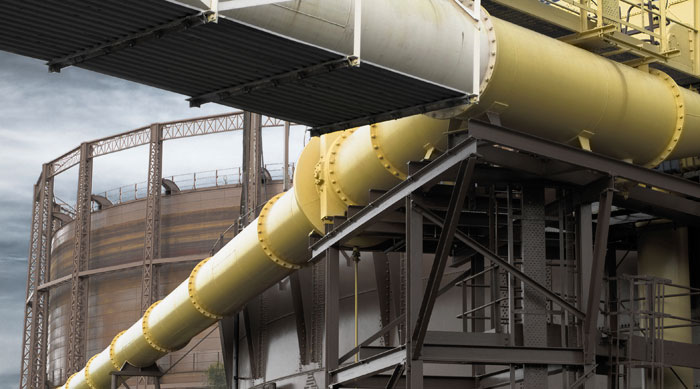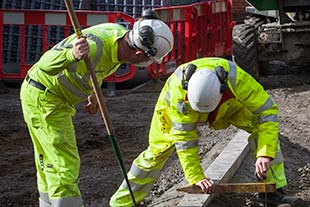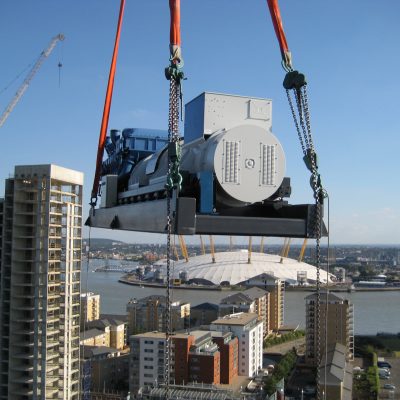©Reuters Shale oil drilling in the Vaca Muerta formation in Patagonia About 1,000km south-west of Buenos Aires, a drill rig towers over a low plateau of Patagonian scrubland. Inside a cabin nearby, engineers working for YPF, Argentina’s state-controlled oil company, use a computer screen to monitor the steady advance of the drill: it has so far bored some 3,300 metres into what the company hopes is some of the best rock on earth. This is the latest so-called “unconventional” oil well being sunk in the Loma Campana field — a joint venture between YPF and Chevron, the US oil producer. Loma Campana taps the resources of the Vaca Muerta formation — a layer of shale bearing oil and gas that can be liberated by fracking, just as similar resources in Texas and elsewhere have transformed the US’s energy supply. Will such shale resources do the same for Argentina? Hopes are high: Vaca Muerta — which covers 30,000 sq km and is hundreds of metres thick — is one of the assets that put Argentina among the countries best endowed with shale oil and gas, according to the US Energy Information Administration. “In terms of productivity Vaca Muerta compares very favourably. If you look at current well results there, the best are in line with the top shale plays in the US,” says Horacio Cuenca, research director for Latin America at industry analysts Wood Mackenzie. Development of the fields here will play a key part in solving one of Argentina’s great conundrums: the disparity between its huge energy potential and its rickety energy supply. This potential is based not just on reserves of hydrocarbons such as Vaca Muerta, where companies such as Dow Chemical, Exxon and Total are also among the investors. Argentina is also ideally placed to generate renewable energy, across sparsely populated regions from sun-baked deserts to windswept Patagonia. Yet as a producer Argentina languishes, having gone from being a net exporter to today relying on imported gas and diesel to keep the lights on. Generating capacity, like the current account deficit, is under strain. Juan José Aranguren, a former head of Shell in Argentina appointed as energy minister by president Mauricio Macri, lays much of the blame at the door of the previous government for distorting the energy market with subsidised domestic energy prices, boosting demand while creating a disincentive to supply. The tariff structure for domestic energy that Macri’s government inherited was only covering about 10 per cent of generating costs, Aranguren says. “Argentina got used to basically having energy that was next to free.” But his attempts to change the situation have already brought severe protests that show the size of the task confronting the government. Vocal opposition to his tarifazo — his attempt to raise domestic energy prices by several hundred per cent — are already showing that energy is an important battleground for the government if its reform agenda is to be cemented and implemented. Daniel Montamat, a former energy minister and analyst, identifies two priorities for Argentina. First, to increase domestic natural gas supply to fill the gap being plugged by imports from Bolivia and Chile as well as by liquefied natural gas. Second, to diversify the country’s sources of electricity generation away from reliance on fossil fuels — something Macri’s government is starting to do with a programme to raise the tiny share of power generated from renewable sources. ©Redux/eyevine A cluster of signs for transport in the Vaca Muerta field Another analyst, Francisco Mezzadri, reckons it will take until 2030 to restore to Argentina’s power generating capacity a comfortable reserve margin to cope with sporadic peaks in power use or maintenance outages. The necessary investment could amount to $4.5bn annually, he says. This year the government has awarded 2,900MW in thermal generation contracts and in recent months has also tendered for at least 1,000MW of renewable energy supply, in a bid to start expanding and renewing generating capacity. Yet if Argentina’s return to financial markets gives more grounds for optimism that the country can attract investment to its energy sector, the currently depressed global prices of oil and gas present strong headwinds. Energy is a key battleground for the government if its reform agenda is to be implemented Argentina has endeavoured to shelter the industry from some of the downturn, maintaining a minimum domestic price for oil and gas that is higher than the international market price. Aranguren says this measure has also safeguarded jobs and revenues in many provinces. But in the long term only a continued drive to improve the competitiveness of the country’s oil and gas resources will have the desired effect — and a key part will be played by the drill rigs of the Vaca Muerta fields. “Shale is the future of hydrocarbons in Argentina,” says Daniel González, chief financial officer of YPF. Ernesto López Anadón, president of the Argentine Institute of Oil and Gas (IAPG), cites three advantages for Argentina in shale in Vaca Muerta: the quality and quantity of the resource; the basin’s sparse population, allied with plenty of the water resources that fracking needs; and the fact that the basin has been part of Argentina’s conventional oil and gas fields for decades, so has plenty of necessary infrastructure. In Neuquén, the regional capital that is a hub for operations in the Vaca Muerta, Pablo Bizzotto, the regional head of YPF’s unconventionals business, says rapid improvements in drilling methods and local availability of key supplies such as sand, are helping to cut costs and raise returns. “We are half a year ahead of where we wanted to be,” he says. “We want everything that is good in Loma Campana to happen in other fields too. We need to keep the learning curve as short as possible.” ©Matías Subat Measured against these improvements are complaints from many in the industry about Argentina’s disadvantages. These include inadequate road infrastructure and high labour costs: drill crews, protected by strong trade unions, typically have more workers than in







